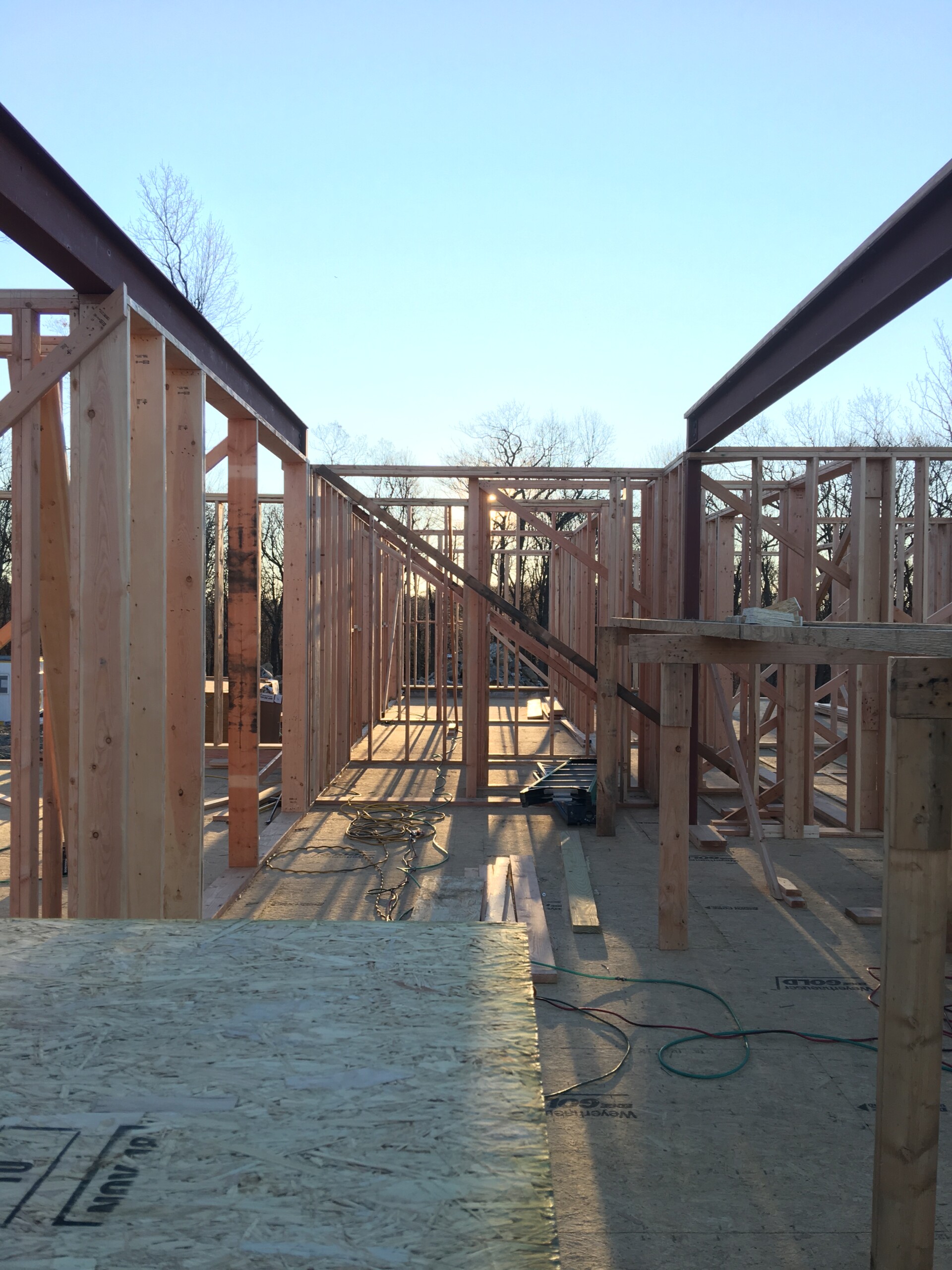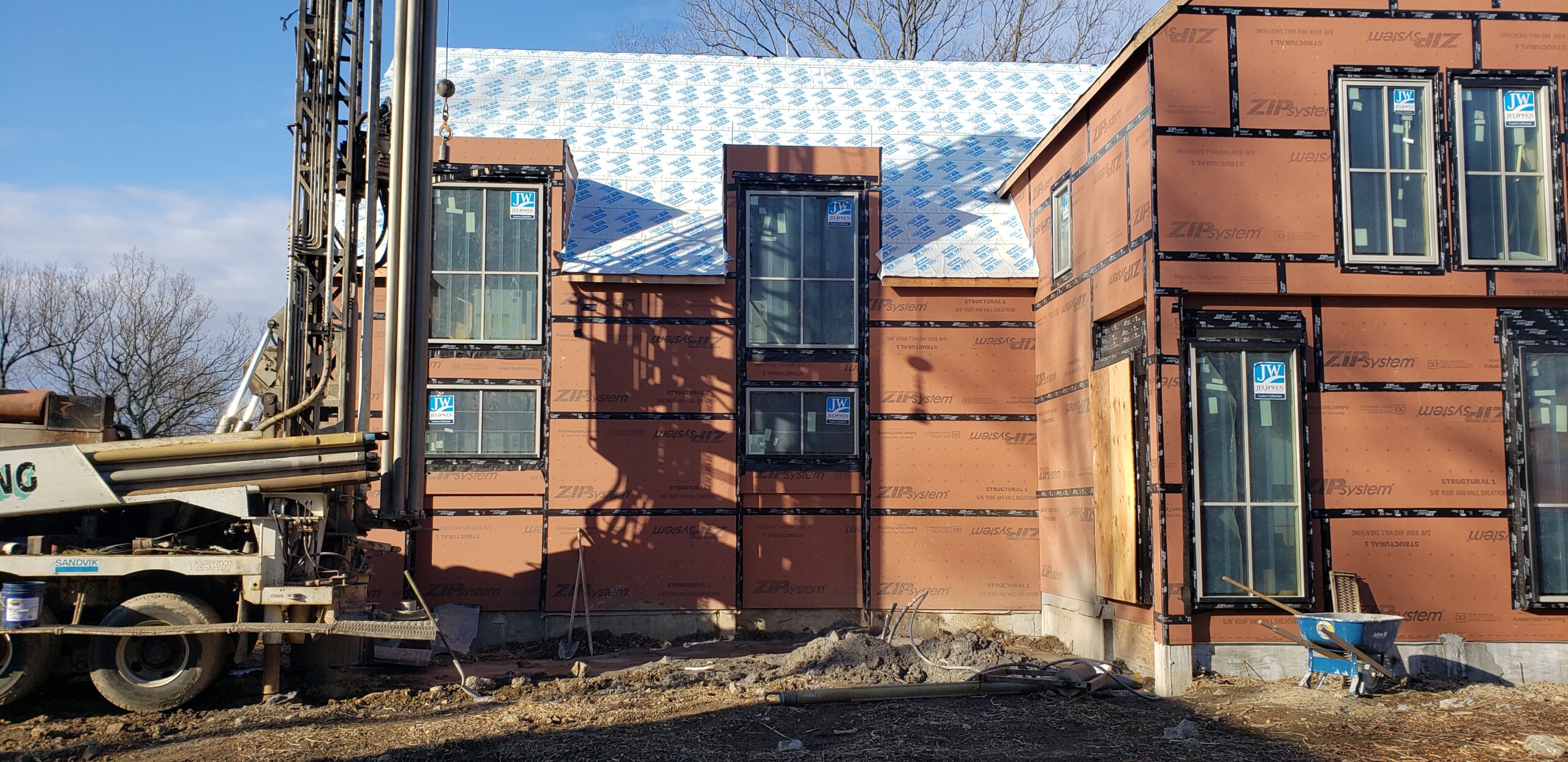
Site Visits, the Workshop/APD Way
Throughout the construction process, routine site visits are key to keeping everything on track. A project doesn’t end once we hand drawings to the general contractor – it continues to require attention, coordination and commitment to bring a Workshop/APD home to fruition. Turning a 2D drawing into a 3D structure can lead to details getting lost in translation without careful consideration and attention. As designers and project managers, we have an obligation to ensure our work is executed to the high standards we hold for ourselves and for our clients.

Whether completing a ground-up home, a gut renovation, a hotel or a multi-family development, the execution takes place in a few key stages. From framing, to drywall, to millwork, our team of perfectionists is closely following along, visiting the site, and documenting every step of the way.
When the framing has just gone up, architects visit the site to confirm many of the fundamental details of the project. Any issues in alignment of lighting, window and door placements, or plumbing and electrical locations need to be caught early on.
What else we’re looking for:
- Finish thicknesses
- Alignments of lighting and openings when windows and doors are rough
- Plumbing adjacencies
- Risers in headboard walls
- Opportunities to insulate and isolate elements
- Over framing for shades and in-wall elements
- Blocking for openings (IE medicine cabinets)
- Outlet and switch locations centered on windows
The next stage – drywall and initial finish installation – is the time for designers to pass through, identifying where architectural reveals will go in. They’ll see to it that all finish materials transition smoothly, and that plaster is smooth enough to be painted or papered.
What we’re looking for:
- Identify locations of reveals (as designed and any missing)
- Pad out/transitions to materials of varying thicknesses
- Finish level to receive paint, plaster, wallpaper, etc
- Specialty edging, cove details, corners, base, etc.
- Confirm device types and locations where wires are pulled through (includes thermostats, temp sensors, sounders, smokes, cameras, etc)

Once we’ve completed our site checklist – the design team has taken photos and overhead shots on the drone, gotten updates from the GC, compared drawings to the real thing – we draft a detailed field report to thoroughly document each visit. No detail is too small for an update; from major material installations to minor landscaping concerns, our designers take note of it all. Creating a paper trail for every visit leads to a sense of accountability among all parties, and reassurance for our clients.
What we’re looking for:
- Reveal – at distinct material transitions, in all bases at floors, in the base of all vertical legs in stone and millwork
- Installation of correct finishes per our drawings, approved samples and shop drawings
- Interior finishes (inside the millwork, backside of doors, underside of countertops, etc)
- Surface protection (floors, corners, countertops, tile etc) after installation
- Finish within reveals (millwork, plaster, paper, etc.)
As the project comes to a close – during a stage called substantial completion – designers complete a meticulous check of every last detail. Throughout the design process, our team becomes so intimately familiar with every element that they’re able to quickly identify any missing or incomplete items. They’ll test the functionality of plumbing fixtures, appliances, and door hardware, point out scuffs in paint and residue left on surfaces, and pass the notes on to our ID team for move-in.


